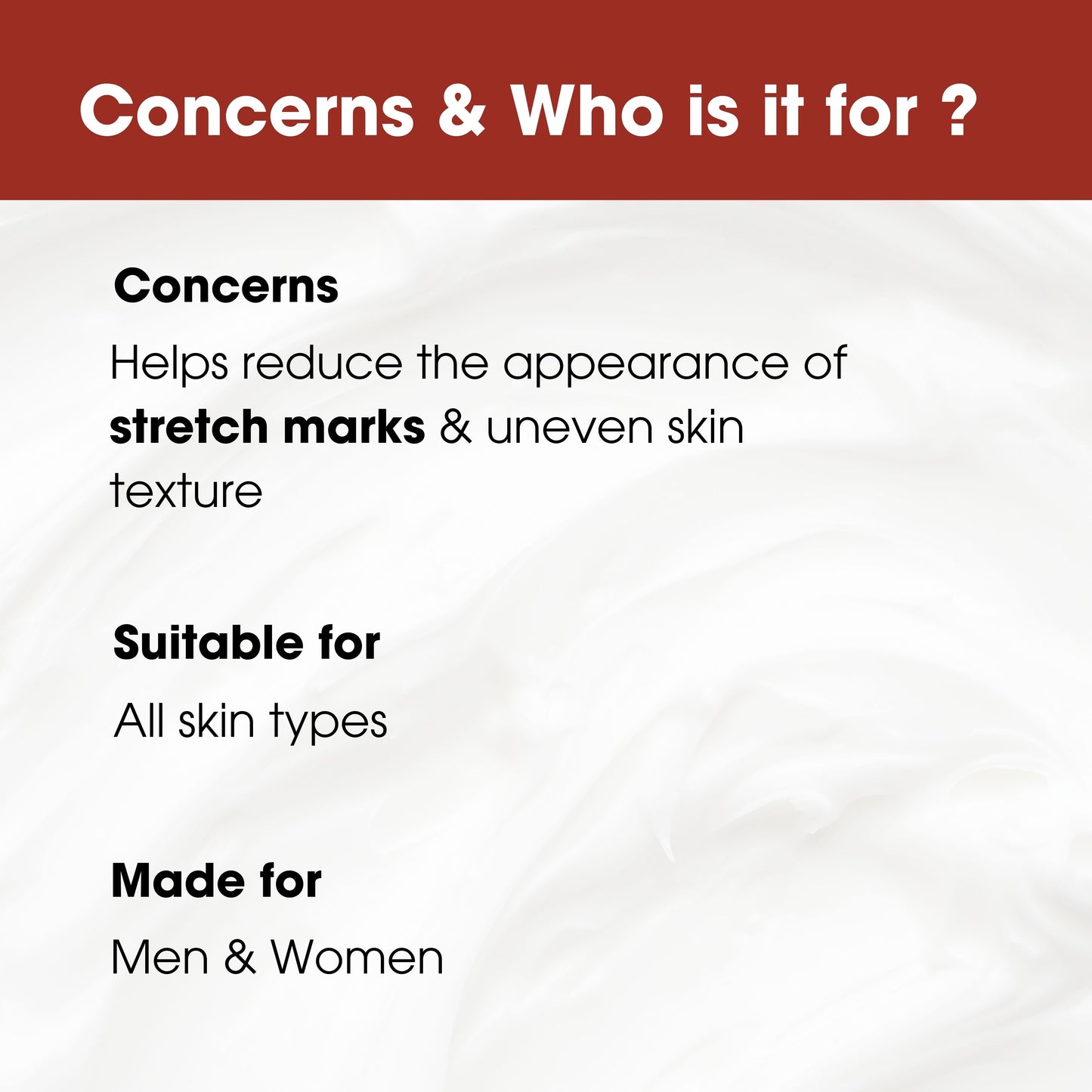Why Do You Have Stretch Marks On Your Butt?
Stretch marks are a common skin concern that many individuals experience at some point in their lives. These streaks, lines, or scars can appear anywhere on the body, and the buttocks are no exception. If you’ve noticed stretch marks on your butt, you may be wondering why they have appeared, whether they are something to be concerned about, and how you can reduce or prevent them in the future. This article will explore the causes, factors, and ways to care for stretch marks on the buttocks.
What Are Stretch Marks?
Stretch marks, medically known as striae, are a form of scarring that occurs when the skin is stretched too quickly or excessively. The dermis, the middle layer of skin, contains collagen and elastin fibers that give the skin its strength and flexibility. When these fibers are stretched beyond their limits, they can tear, leading to visible lines on the surface of the skin.
Stretch marks typically start as red, purple, or dark streaks and may eventually fade to a lighter or silvery color over time. Although they don’t pose a medical risk, they can affect an individual’s appearance and self-esteem.
Common Causes of Stretch Marks on the Buttocks
Stretch marks on the buttocks are a common occurrence and can happen due to a variety of reasons. Understanding why they appear can help you address the root cause and take steps to prevent further development.
1. Rapid Weight Gain or Loss
One of the most common causes of stretch marks is significant fluctuations in weight. If you gain weight quickly, the skin on your buttocks (and other areas of your body) may stretch to accommodate the extra fat. Conversely, if you lose weight rapidly, the skin may shrink but may not have enough elasticity to return to its original state, leading to stretch marks.
In both scenarios, the dermis is stretched beyond its capacity, which can cause tears in the collagen and elastin fibers, resulting in stretch marks.
2. Pregnancy
Pregnancy is another common cause of stretch marks on the buttocks. As the body undergoes significant changes to accommodate the growing baby, women may experience weight gain, hormonal fluctuations, and changes in the distribution of fat. This rapid stretching of the skin, especially in areas like the abdomen, thighs, and buttocks, often leads to the development of stretch marks.
Hormonal changes during pregnancy, particularly an increase in the hormone cortisol, can also weaken the skin’s elasticity, making it more susceptible to stretch marks.
3. Puberty
Stretch marks often appear during puberty as the body undergoes rapid growth and development. During this time, teenagers experience growth spurts that can lead to rapid stretching of the skin, especially on areas like the buttocks, thighs, and hips. The body’s increased production of hormones, such as estrogen, can also play a role in the formation of stretch marks.
4. Genetics
Genetics can play a significant role in the development of stretch marks. If your parents or siblings have experienced stretch marks, you may be more prone to them. Your skin type, elasticity, and tendency to gain or lose weight rapidly may all be influenced by your genetic makeup.
5. Certain Medical Conditions
In some cases, stretch marks may be linked to medical conditions or medications that affect the skin’s elasticity. Conditions like Cushing’s syndrome, Marfan syndrome, and Ehlers-Danlos syndrome can make the skin more fragile and prone to tearing, increasing the likelihood of stretch marks. Additionally, the long-term use of corticosteroid medications can weaken the skin and cause stretch marks.
6. Hormonal Changes
Hormonal fluctuations, particularly those related to pregnancy, puberty, or the use of hormonal medications, can contribute to the development of stretch marks. Increased cortisol levels, in particular, can break down collagen and elastin, which are essential for maintaining the skin’s elasticity.
Are Stretch Marks on the Buttocks Preventable?
While it is not always possible to prevent stretch marks, there are several strategies you can employ to minimize their appearance and reduce the risk of developing new ones.
1. Maintain a Healthy Weight
One of the most effective ways to prevent stretch marks is to maintain a stable, healthy weight. Avoid rapid weight gain or loss by adopting a balanced diet and engaging in regular physical activity. This will not only support your skin’s elasticity but will also promote overall health.
2. Stay Hydrated
Drinking plenty of water is essential for maintaining healthy, supple skin. Well-hydrated skin is more elastic and less likely to develop stretch marks. Aim to drink at least 8 glasses of water a day to keep your skin hydrated from the inside out.
3. Moisturize the Skin
Keeping your skin moisturized can improve its elasticity and help prevent stretch marks. Apply a rich, hydrating cream or oil to the buttocks and other areas prone to stretch marks. Regularly moisturizing your skin can help prevent dryness and itching, which can also accompany stretch marks.
4. Use Products to Enhance Skin Elasticity
There are various oils and creams that may help improve the elasticity of your skin. These products are often formulated with ingredients that promote collagen production and support skin repair. Using such products consistently may help reduce the appearance of stretch marks, especially during times of rapid body changes like pregnancy or puberty.
5. Exercise Regularly
Engaging in regular physical activity can help maintain a healthy weight and keep your skin firm and toned. Strength training exercises, in particular, can help build muscle, which may help fill out the skin and prevent the formation of stretch marks.
How to Treat Stretch Marks on the Buttocks
If you already have stretch marks on your buttocks, several treatment options can help reduce their appearance. While no treatment can completely eliminate stretch marks, the following methods may help improve their look:
- Topical Creams and Oils: Certain creams, oils, and lotions are formulated to help reduce the appearance of stretch marks by increasing skin hydration and promoting collagen production. Regular application of these products can make stretch marks less noticeable over time.
- Laser Therapy: Laser treatments can stimulate collagen production in the skin, improving the texture and color of stretch marks. This option is best for individuals with severe stretch marks who want to see significant improvement.
- Microdermabrasion: This non-invasive treatment involves exfoliating the skin to promote the growth of new, healthy skin. It can help reduce the appearance of stretch marks and improve the overall texture of the skin.
- Chemical Peels: Chemical peels can help to remove dead skin cells and improve skin texture. They may be effective in reducing the visibility of stretch marks over time.
Conclusion
Stretch marks on the buttocks are a natural and common occurrence caused by factors like weight changes, hormonal shifts, and genetics. While they can’t always be prevented, maintaining a healthy weight, staying hydrated, and using moisturizing products can help minimize their formation. If you already have stretch marks, treatments such as topical creams, laser therapy, and microdermabrasion may help reduce their appearance. Ultimately, stretch marks are a normal part of life and should be embraced as a sign of the body’s resilience and strength.
Also Read: When Do Stretch Marks Appear During Pregnancy?






